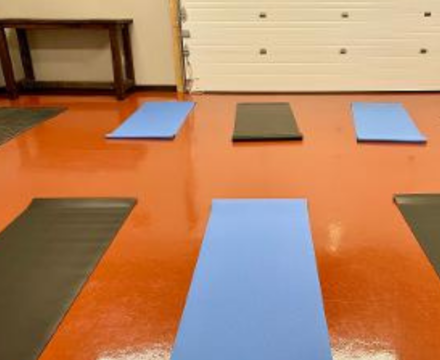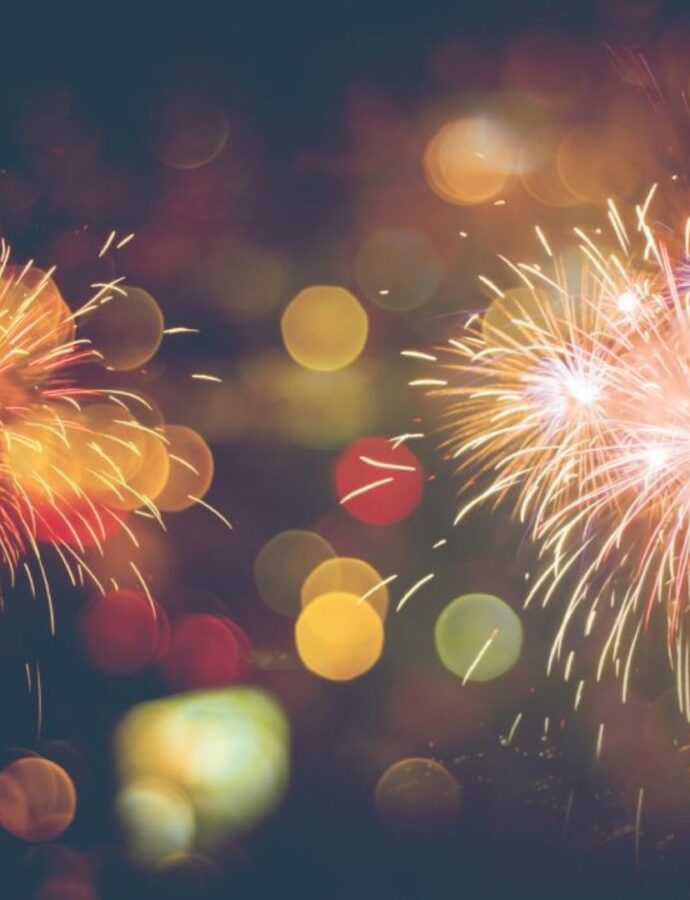
The final project during my first yoga teaching training in India was to write down our future plans over the course of the next 10-years. We were instructed to not put too much thought into it and to write down the first things that came to mind. We didn’t need to write about how we would achieve these things. We just needed to know what we wanted to achieve.
- My list was as followed:
Go to Graduate School and receive my Master’s degree in Speech-Language Pathology - Get married and have a family
- Find a good career as a speech-pathologist
- Open a yoga school
My list may have seemed predictable and simplistic to some people. But at the time, all of these things felt far out of reach and unachievable. I was surprised that I even wanted these things in my life. However, during this time I felt a sense of clarity that I had never experienced. With this newly cultivated sense of focus, calm, and purpose, I trusted that these things were what I truly desired in my life.
Lack of Clarity
As a modern species, it appears we are moving toward more mass confusion, rather than more mental clarity. Our bodies and minds have a hard time assimilating and digesting all the information we are taking in. We are prone to the constant bombardment of notifications, news, and information. Digital platforms, such as Facebook, Instagram, Tik Tak (as Joe calls it), and Snap Chat, can leave us feeling hyperstimulated and overwhelmed.
Without clarity, we move through our lives going through the motions rather than with a clear sense of purpose. We also may be less equipped to handle life’s challenges rather than approach them skillfully. Lack of clarity can result in increased mental and physical fatigue, and compromise our overall sense of well-being.
What Is Clarity?
One definition of clarity is the quality or condition of being clear. This very definition of clarity seems rather unclear. In the yoga tradition, clarity is defined as the ability to discern what is necessary and helpful in your life from what is not. It is a certain kind of knowingness rather than a decision-making process.
With better clarity, we all may know to pick up a book before bed rather than scroll on Instagram to help us have better sleep. We would also know when to ask Google and when to rely on experience and our own knowledge. We may also decide to use our brains for creative purposes rather than focus our mental energy on the notifications from our phones.
How to Develop Better Clarity
One way we can develop better clarity in our lives is by practicing the Five Principals of Yoga. I was lucky enough to practice these principles while living in an ashram. This environment was secluded and free from distractions. Still, these tools can be applied to daily life outside the ashram to help us develop a clear sense of direction, purpose, and well-being.
These tools help to bring an overall sense of clarity to my life. I continue to return to them whenever I feel overwhelmed, have an increase in anxiety, or find myself in a depressed state. Then I can develop the clarity to approach life’s bigger questions and challenges more skillfully.
The 5 Points (TOOLS) of Yoga:
1. Proper Exercise:
Ashram life: We practiced a 90-minute core sequence 6-days per/week that consisted of various postures or asanas, interspersed with periodic relaxation poses, such as Savasana (Corpse Pose). The sequence emphasized incorporating the breath with each movement. It also focused on building spinal strength and flexibility. The postures built strength, balance, and flexibility. The sequence also promoted concentration and relaxation by focusing the mind on the body’s movement and breath.
How to Use This Tool In Your Own Life: It is no secret that there are several benefits of exercising. Life can become challenging if our physical body is not healthy. Because exercise helps keep our bodies and minds healthy, I think it is important to discover and practice a consistent movement-based practice that works best for the individual- whether that be walking, swimming, running, yoga, biking, or whatever exercising activity you choose.
2) Proper Breathing
Ashram life: We began each day practicing various breathing techniques, otherwise known as pranayamas. Some of these techniques included alternate nostril breathing (anuloma viloma) diaphragmatic breathing, 3-stage breathing, and breath of fire (kapalabhati).
How to Use This Tool In Your Own Life: Anyone can benefit from spending just 5-minutes a day focusing on the breath. You can do this by breathing in and out through the nose slowly for a count of 4-6 seconds for each inhale and exhale. Allow your stomach to rise as the air enters your lungs with every inhale. Allow your stomach to fall as the air leaves your lungs with every exhale.
3) Proper Relaxation
Ashram life: There were three types of relaxation focused on during my training- physical, mental, and spiritual relaxation.
- We practiced physical relaxation by going to bed early. We also systematically practiced conscious relaxation by taking rest in between postures during our yoga practice (Savasana).
- Mental relaxation was practiced by focusing our minds on our breath and bodies. All distractions, such as the internet and phones, were removed from our environment. This simple environment gave us less to focus on because yogis believe a distracted mind is always anxious. A mind concentrated on a positive object (like the breath) is more relaxed and recharged.
- Spiritual relaxation meant learning about the things we could control (thoughts, feeling, actions) and surrendering to those we cannot (life’s circumstances, people, the world). The purpose of spiritual relaxation is to be more present, overcome our fears, and welcome life’s demands with strength and courage. Then we can better guide our minds, control or redirect unconstructive habits, and better choose our priorities.
How to Use This Tool In Your Own Life:
- Physical Relaxation- Giving your body adequate rest allows it to recover after physical activity. This is one of the reasons savasana is at the end of every yoga class. Building in rest days into your exercise routine is also necessary for the muscles to repair, rebuild, and strengthen. Sleep plays a vital role in our health and well-being. Getting enough quality sleep can help protect mental & physical health and quality of life. It is estimated that 1 in 3 adults don’t get enough sleep. Click here for some strategies to help you get enough sleep
- Mental Relaxation- We can slow down our thoughts and calm the mind by giving it something to focus on- such as the breath, music, or guided imagery. Mental relaxation can also be achieved through practices such as meditation or Yoga Nidra.
- Spiritual Relaxation- There are many definitions of spirituality. Spirituality can be related to developing a sense of peace and purpose. It is also the process of developing beliefs around the meaning of life and connection with others. Spiritual relaxation can then involve any activity that enhances or gives meaning to your life- such as writing, studying texts or scriptures, being in nature, meditating, or expressing gratitude.
4) Proper Diet
Ashram life: We consumed a simple, natural, and wholesome vegetarian diet 3 times per/day. This diet was free from caffeine, alcohol, overly spicy food, canned food, sodas, processed foods, and meat.
How to Use This Tool In Your Own Life: I don’t believe everyone should eat the same because we are all vastly different. What worked for me was figuring out the foods that made me feel better versus those that did not. I mainly try to consume the things that leave me feeling energized and satiated. I attempt to avoid the food that leaves me feeling sluggish, jittery, and uncomfortable.
5) Proper Mindfulness/Meditation
Ashram life: Meditation became a daily practice during my time on the ashram. We started each morning by sitting silently for at least 30-minutes. The purpose was to detach from and be an observer of our thoughts. We used this time to train ourselves to observe our thoughts during daily life, resulting in less reactivity, more internal control, and increased clarity.
How to Use This Tool In Your Own Life: Mindfulness means to bring attention to the present moment without judgment and to be able to consciously decide how we wish to respond. We can become more mindful by slowing down, focusing on one thing, turning off all distractions, and observing what we are thinking.
Finding Clarity
It has been 10-years since my first teacher training in India. I have completed the first three goals from my 10-year plan. I am not yet clear about how I will execute the final item on my list which is to open a yoga school. However, what I am clear about is I have to start by taking action.
So I will be teaching a weekly 75-minute yoga class from our guesthouse on Wednesday nights at 6 pm starting on February 16th. I am calling this space the Yoga Shack. It will be an all-level class that will incorporate breathing exercises, movement (asana), a bit of yogic philosophy, and a final relaxation (savasana) for your body and mind. Classes are $8 or $35 for a 5-class pass. All proceeds will go toward purchasing items needed for the Yoga Shack.
My intention is to provide a distraction-free space to give individuals an opportunity to learn and practice some of the tools and principles of yoga. My hope is that these teachings will carry over into the student’s daily life through consistent practice off of the yoga mat.
You can email me for more information at kristin@aloveofyoga.com
I hope to see you there!
Contemplation Points
Disclaimer: I just gave you a lot of information about how to develop more clarity. The key is to put this information into practice to increase clarity in your own life. Apply and practice the below contemplation points to help you develop better clarity.
- Notice if there are areas in your life where you feel “off”, or have a lack of clarity? If so, it may be because you have neglected one of these five areas. For me, I may be scrolling too much, not getting enough sleep, or neglecting to watch my thoughts.
- How can you apply some of the 5-principals to your life? Maybe you can start by moving your body a little more, or perhaps a little less. Or you can eat the things that have long-term benefits for your body rather than those things that bring instant gratification. You could breathe a little slower and more purposeful. Or go to bed earlier, give yourself time to rest when needed, and surrender to the things you cannot control. You could also start to watch your thoughts and choose the ones that lead you toward the life you want.
- So what is it you plan to do with your one wild and precious life? If you don’t have the answer, you can try applying one, some, or all of the five points of yoga to your life.







